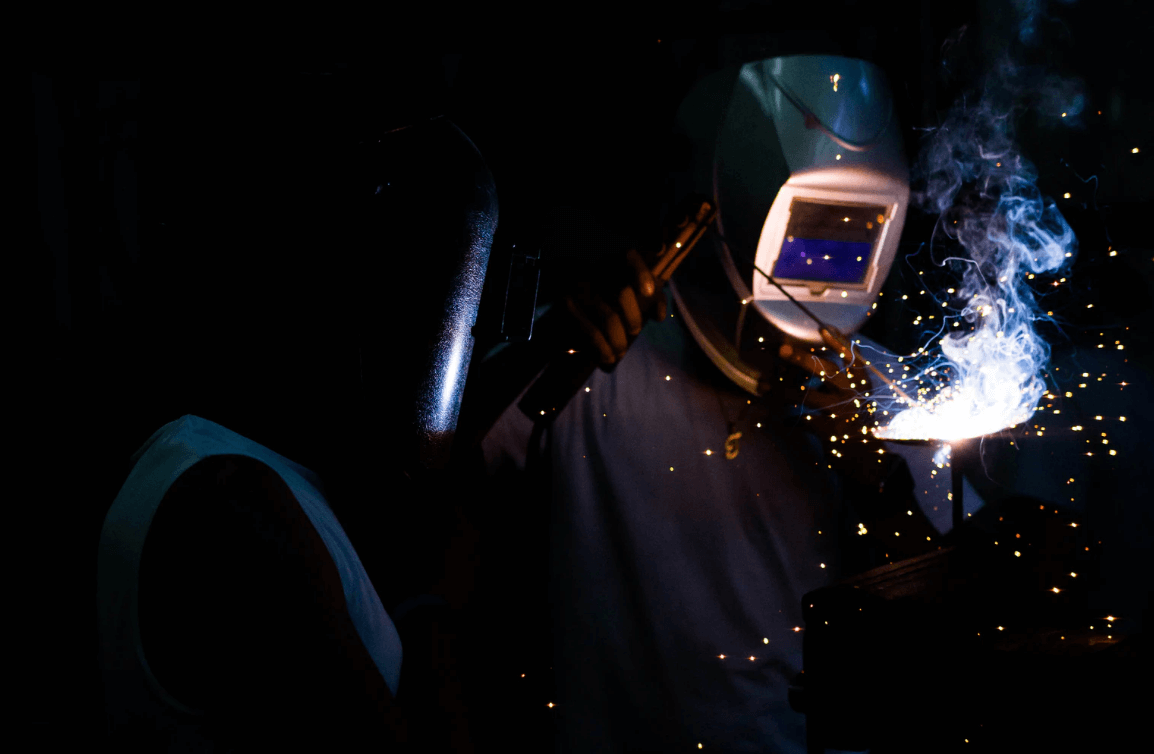There are several types of gauges used in measuring welds and welding defects including but not limited to porosity, undercut, underfill and concavity. The two most used kinds are the Standard Fillet Weld Gauge and AWS Gauge (Automatic Weld Size Gauge). This article will show you how to use both gauges properly.
The Fillet Weld Gauge is one of the easiest gauges to use, and is helpful to check welds for fillet size and concavity. We always want our welds to be from flat to slightly convex. The Fillet Weld Gauge will let you know if your weld is concave. This type of gauge will typically include 7 or more pieces.
For example, here are some instructions on how to use a 1/2″ fillet weld:
Simply slide the gauge and have the top end rest against the vertical piece. This end should be exactly at the top edge of the weld to be a 1/2″ fillet. If you have space between the gauge and the toe of the weld, then the weld is undersized. The bottom edge of the fillet has more room, which allows for a larger leg size. This is particularly useful with big fillet welds where gravity tends to make the bottom leg larger. The vertical line will show where the bottom toe should be.
Once you have determined that the weld is properly sized at 1/2″, then test for concavity or convexity.
Generally, welds should never be concave. The protrusion in the middle of the gauge should make contact with the weld, verifying that the weld is not concave. If there is daylight between the face of the weld and this end of the gauge, the weld is concave and is no longer an acceptable 1/2″ fillet.
An AWS Gauge, however, is more versatile than the Standard Fillet Gauge. There are several things it can measure:
Size of a fillet weld
Place the gauge against the toe of the weld and slide the pointer down towards the bottom piece of the structure being welded. The size of the fillet weld will be indicated by the gauge.
Permissible tolerance of convexity
Using the end of the gage that has the 45-degree angle sides, bring the gauge until it touches both pieces being welded. Slide the pointer down, this time until it touches the face of the weld. The gauge will indicate if there is too much reinforcement.
Permissible tolerance of concavity and underfill
This time you do the same as you would when checking for permissible convexity. The gauge will indicate if there is a concave weld.
Permissible tolerance of reinforcement
Butt weld will sometimes have a specified maximum reinforcement allowed. In order to measure the reinforcement on a butt weld, place the gauge at a 45-degree angle.
These are only a few of several types of gauges available. Other kinds are able to measure undercut, misalignment, amount of porosity and angle of preparation.
At PCES, we have a range of welding gauges suitable for a variety of uses. These inspection and welding gauges are all of the highest quality and allow you to measure welds quickly and easily. This helps you achieve accurate results.
The kinds of weld gauges we stock allow you to measure misalignment, fillet weld throat size, fillet weld length, angle of preparation, undercut depth and pit depth.
For more information on our range of weld gauges available, contact us today!
